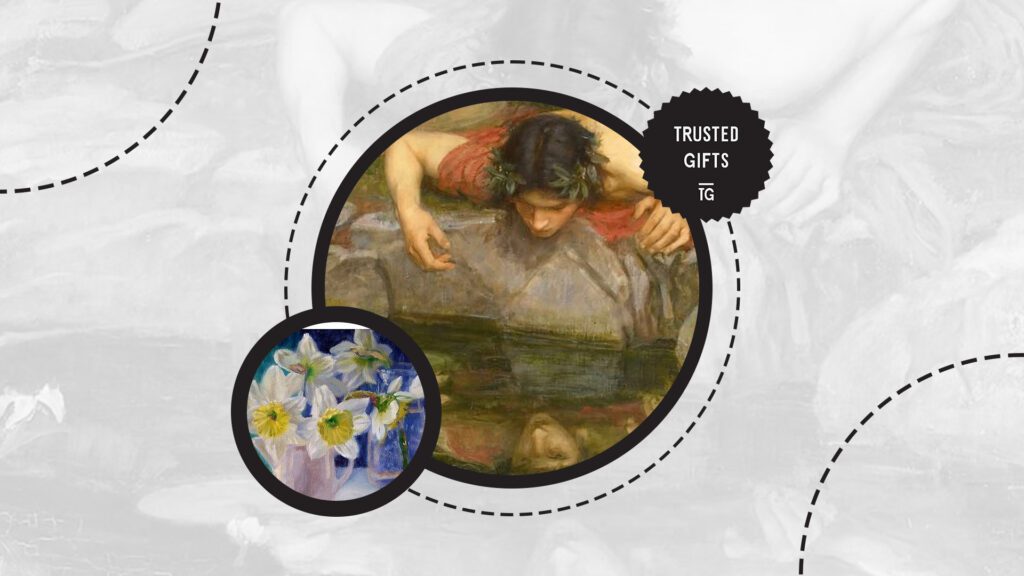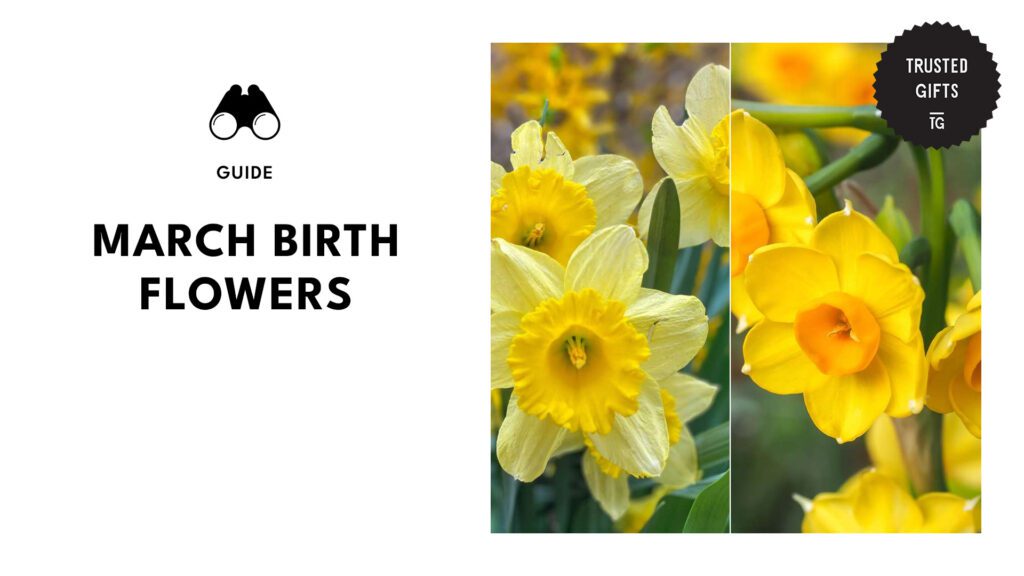As winter packs its bags and spring tiptoes in, vibrant daffodils and dainty jonquils burst onto the scene, flaunting their golden and sun-kissed blooms like the floral celebrities they are.
In this complete guide, we’ll uncover the most commonly considered birth flowers for March: both proud members of the accurately named Narcissus family.
We’ll delve into their sunny hues, decode their centuries-long cultural significance, and explore the tales they’ve spun across mythologies and religions.
What are the most commonly considered flowers for March?
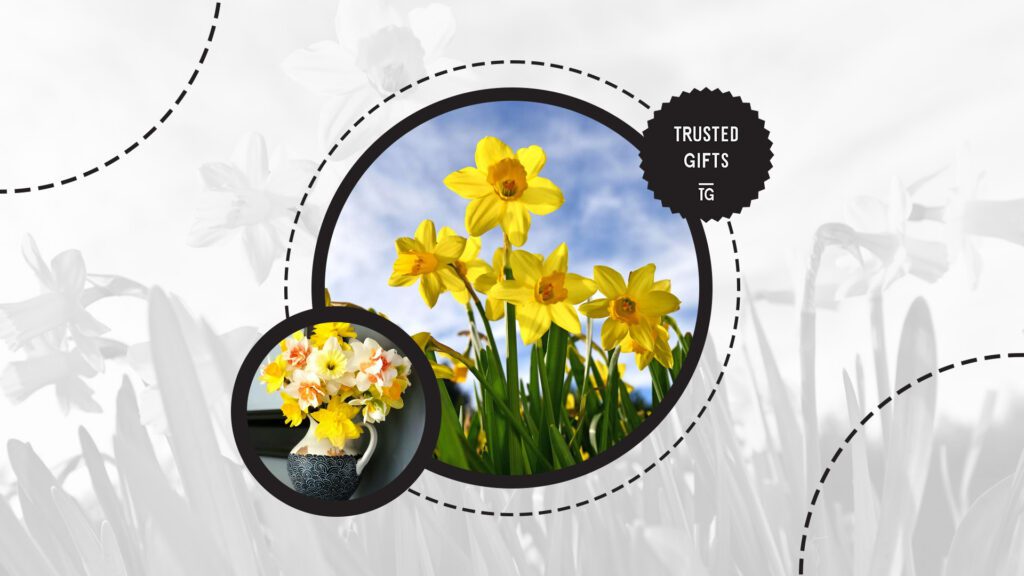

Daffodils and jonquils are the most commonly considered flowers for March. Renowned for their cheerful appearance, these two flowers are the perfect symbols for the arrival of spring.
The daffodil’s ability to thrive as the winter frost melts away cements its status as a welcome of warmer, brighter days. Meanwhile, the jonquil, while similar in vibrancy, is popular for its intoxicating fragrance. The first whiff of it is a reminder of new beginnings.
Everything You Need to Know About Daffodils
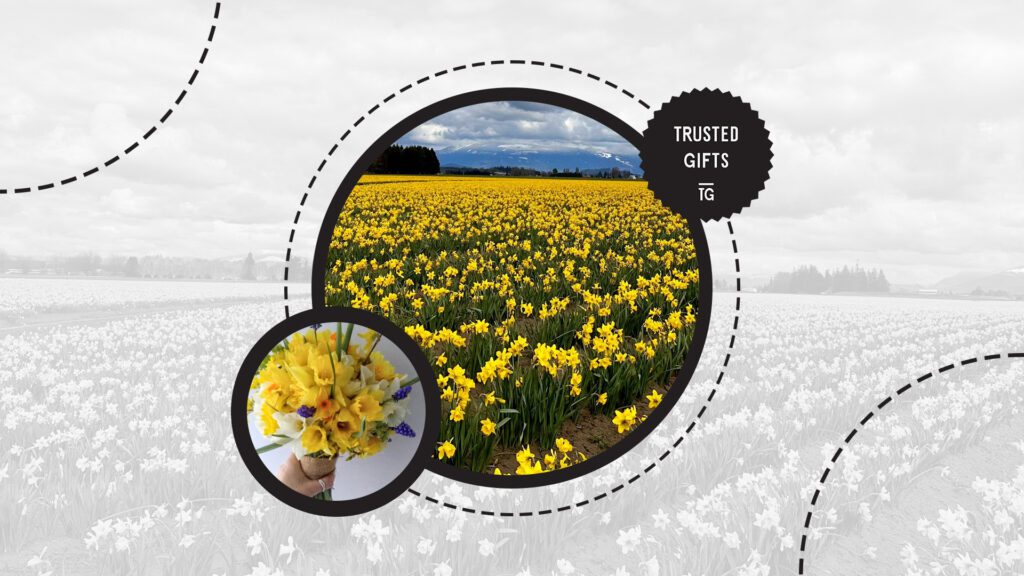

Representing an older genus of Narcissus, daffodils are more than just a pretty face.
Native to the Mediterranean regions, North Africa, and Western Asia, this tough genus of perennial plants in the Amaryllidaceae family are notable for their versatile nature.
With approximately 50 known species, these flowers can thrive in numerous environments, allowing them to grow in a variety of settings, from cultivated gardens to wild meadows.
What is the origin of daffodil flowers?
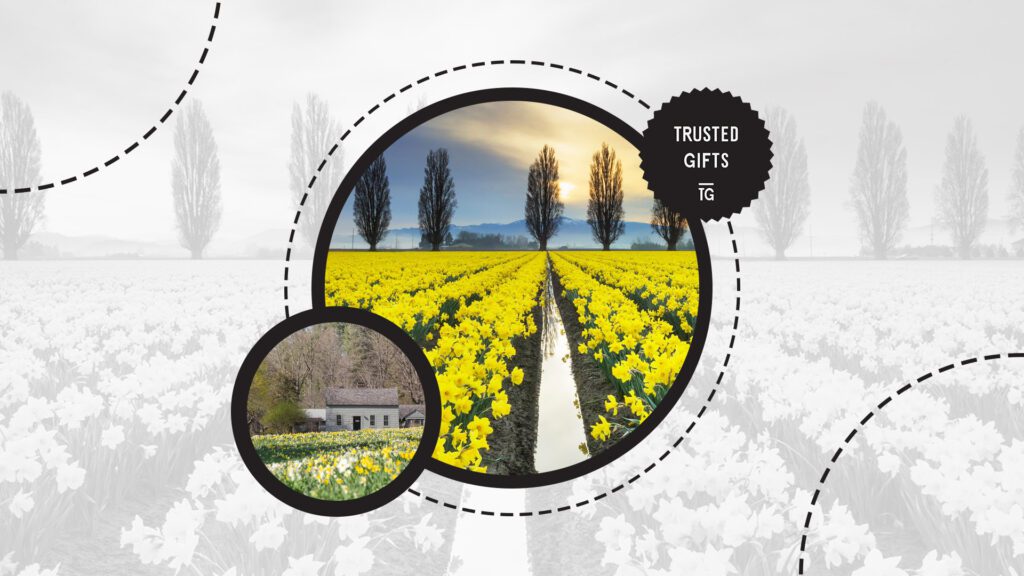

Native to meadows and woods in Southern Europe and North Africa, with a center of diversity in the Western Mediterranean, daffodils trace their origins back to ancient times, having been documented as early as ancient Greek and Roman civilizations.
However, the name “daffodil” only dates as far back as the 16th century.
Daffodil is believed to have evolved from “asphodel,” an ancient Greek word for a different plant with similar characteristics found in the Underworld in Greek mythology. It’s a hardy, herbaceous perennial plant with star-like white or yellow flowers growing on a single or branching tall spike.
Over time, this name transitioned to “affodell” in Middle English and eventually to “daffodil” as we know it today. The initial “D-” is believed to be from the merging of the article “the” in Dutch, as they would refer to the flower ads “de affodil” in Netherlands.
What do daffodil flowers look like?
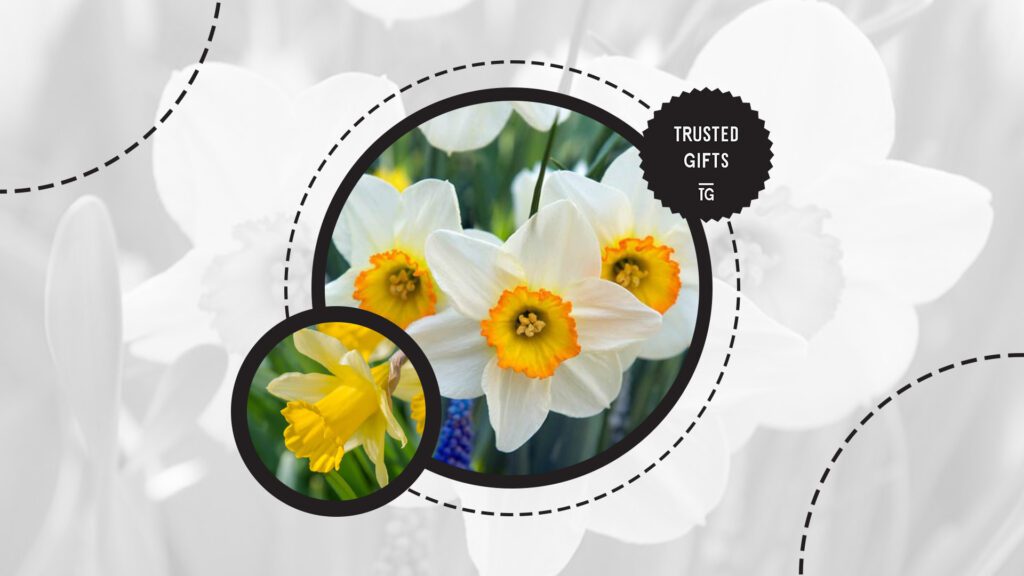

Daffodils typically feature a crown-shaped corona, known as the “trumpet” or “cup,” and are one of the few flowering plants to have this. This structure is surrounded by six petal-like tepals (sepals and petals mixed together), or simply the outer parts of the flower.
The trumpet can vary in length and shape, ranging from short and broad to long and slender. Meanwhile, the tepals showcase a spectrum of vibrant colors and combinations, including yellow, white, orange, and sometimes even pink, making them recognizable in a spring landscape.
Daffodils commonly bloom in early spring, with each flower arising from a single stem that emerges from a bulb. The stems can range in height, from just a few inches to over two feet tall, depending on the specific cultivar.
Their foliage is typically long and narrow, resembling grass-like leaves, which emerge from the base of the stem.
Because of their vibrant colors, graceful forms, and cheerful appearance, daffodils are popular choices for gardens, landscapes, and floral arrangements alike.
What are the meaning of daffodil flowers?
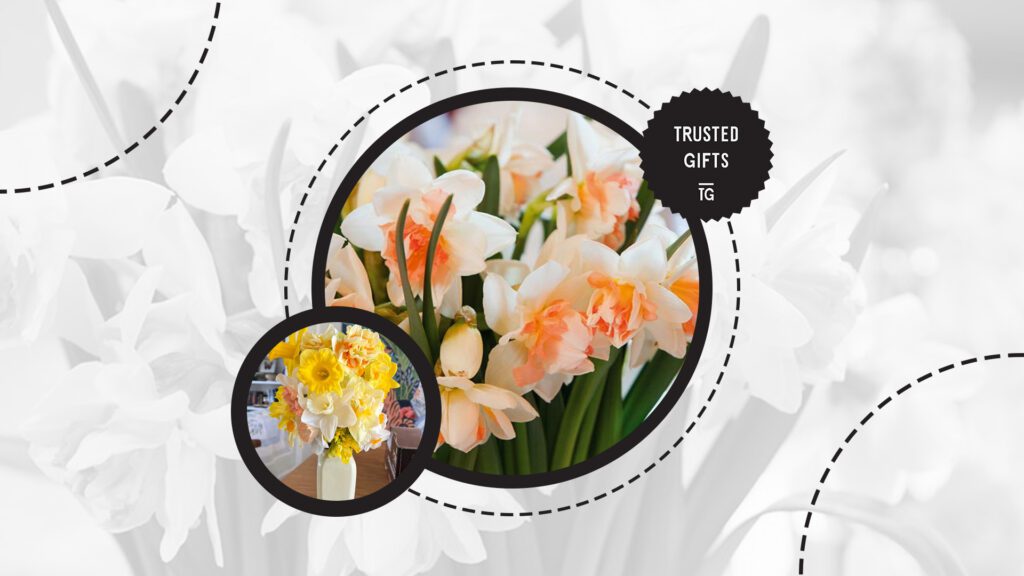

Despite their bright and cheerful facade, the meanings of daffodils range from new beginnings to creativity and inspiration to betrayal and unrequited love.
They’re like the floral equivalent of a wise old sage. With centuries of symbolism tucked behind their sunny petals, they have a lot more to say than “Spring is here!”
Here are other meanings associated with daffodil flowers.
What do the colors of daffodil flowers mean?
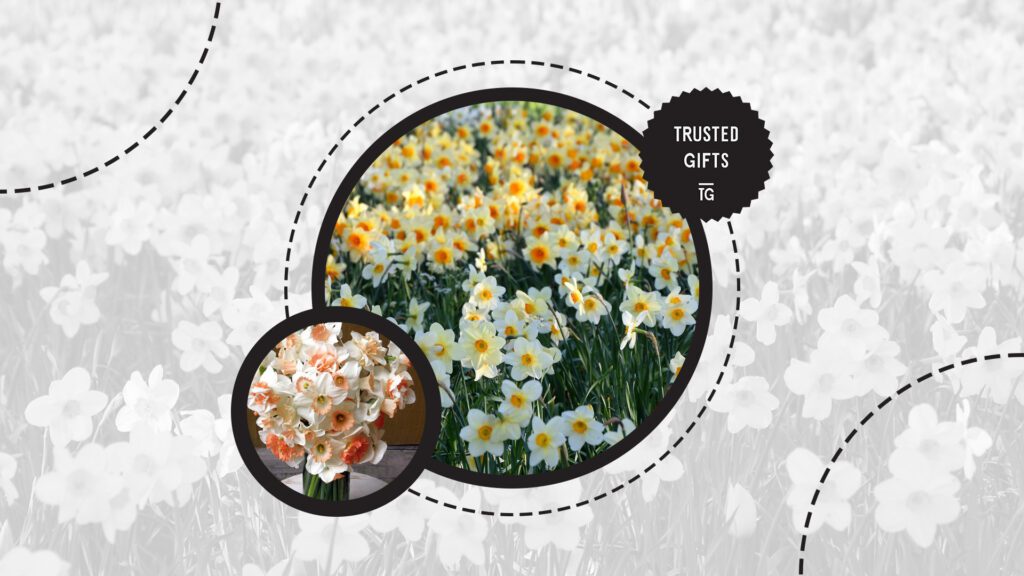

What did daffodil flowers symbolize during the Victorian era?
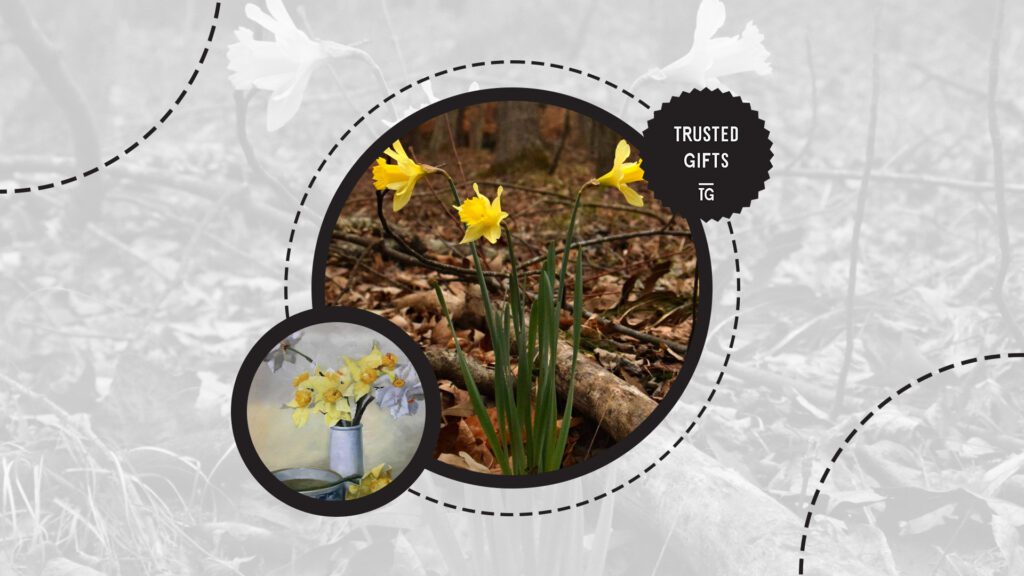

From hopeful beginnings to unrequited love, daffodils conveyed deep emotions and messages during the Victorian era. This makes daffodils a powerful means of communication in a society that prized decorum and subtlety.
Hope and New Beginnings: Thanks to their bright and early blooms in spring, Victorians used these flowers as symbols of new beginnings and the promise of better times ahead. Gifting a bouquet of daffodils was like telling them that brighter days were coming.
Chivalry and Respect: In Victorian floriography, these flowers were often given to show high regard, making them a popular choice for expressing noble sentiments. A gentleman might present daffodils to a lady as a way of honoring them, without grand public proposals.
Unrequited Love: Interestingly, daffodils carried a slightly more poignant meaning as well. This meaning stemmed from the Greek myth of Narcissus, who fell in love with his own reflection and was ultimately transformed into a daffodil.
This tale of self-love and longing was well-known to the Victorians, and daffodils could subtly express the heartache of unreturned affection.
Rebirth: Because of the Victorians’ deep interest in symbolism and spirituality, they viewed daffodils as emblems of resurrection. This was tied to their early spring appearance, coinciding with the Easter season, which celebrated the resurrection of Christ.
Thus, daffodils became a beautiful but poignant symbol of life, death, and the promise of renewal.
What are the religious and mythological associations of daffodil flowers?
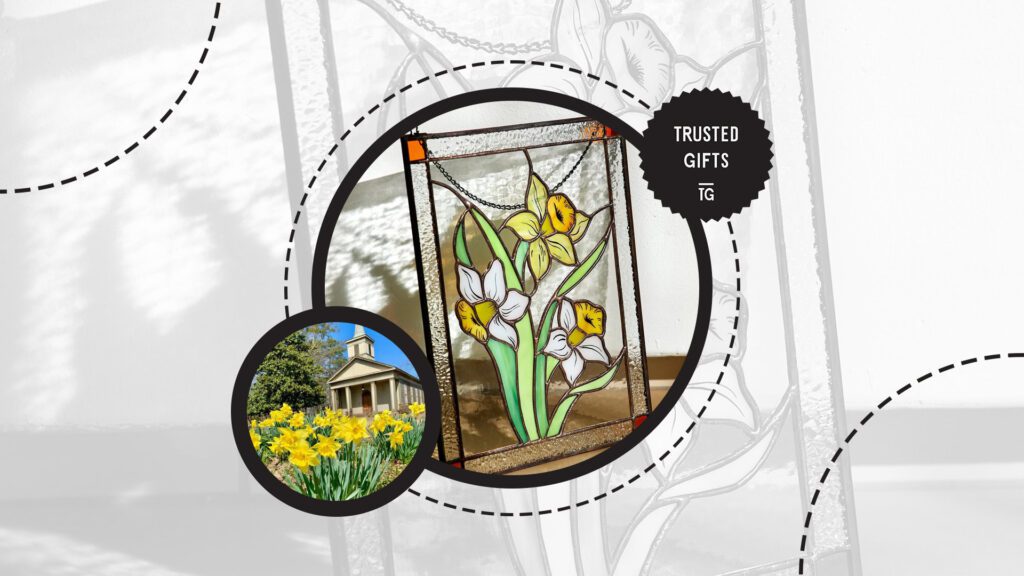

As mentioned earlier, daffodil flowers have been steeped in religious and mythological significance for centuries, making them more than just beautiful harbingers of spring.
Everything You Need to Know About Jonquils
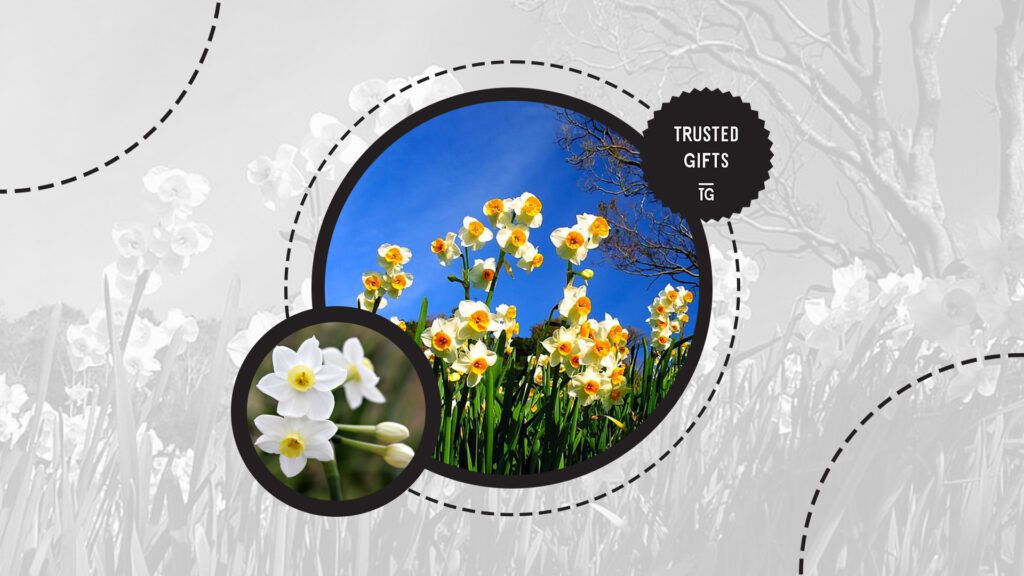

Contrary to popular belief (and most common garden mix-ups), jonquils are not just daffodils with a fancy name trying to impress their floral friends. But are they the same? No.
All jonquils are all daffodils. Not all daffodils are jonquils, though. Confusing, we know.
Despite originating from the same sun-drenched lands as the daffodil (i.e., the Mediterranean, North Africa, and Western Asia) jonquils belong to a venerable lineage within the Narcissus genus.
Unlike their more showy relatives, these flowers, with their slender petals, carry a subtle visual allure and a strong fragrance that tells of ancient tales and timeless gardens.
What is the origin of jonquil flowers?
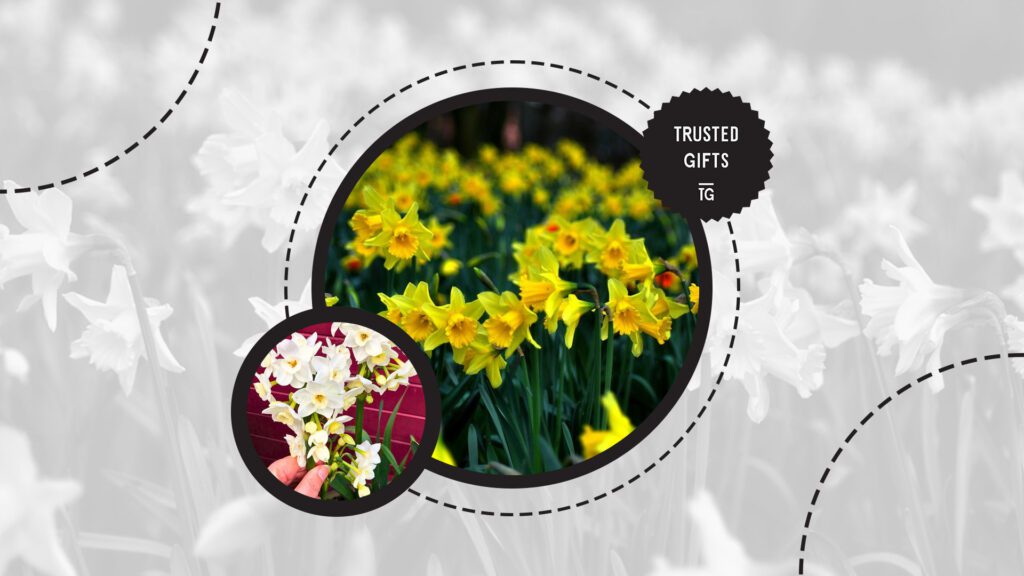

Historically, jonquils have been cultivated and appreciated for their beauty and fragrance since ancient times.
The name “jonquil” itself is believed to have originated from the Spanish word “jónquillo,” which refers to a type of rush or reed, possibly due to the resemblance of the jonquil leaves to these “rush-like” plants.
Despite being introduced into gardens from its native home in Spain and Portugal, the cultivation and hybridization of jonquils began in earnest during the 17th and 18th centuries. In Europe, particularly in France and England, botanists and gardeners sought to enhance the daffodil’s characteristics and create new varieties.
This period saw the introduction of numerous cultivars with varying flower colors, sizes, and fragrances, further solidifying the jonquil’s popularity in gardens and landscapes.
What do jonquil flowers look like?
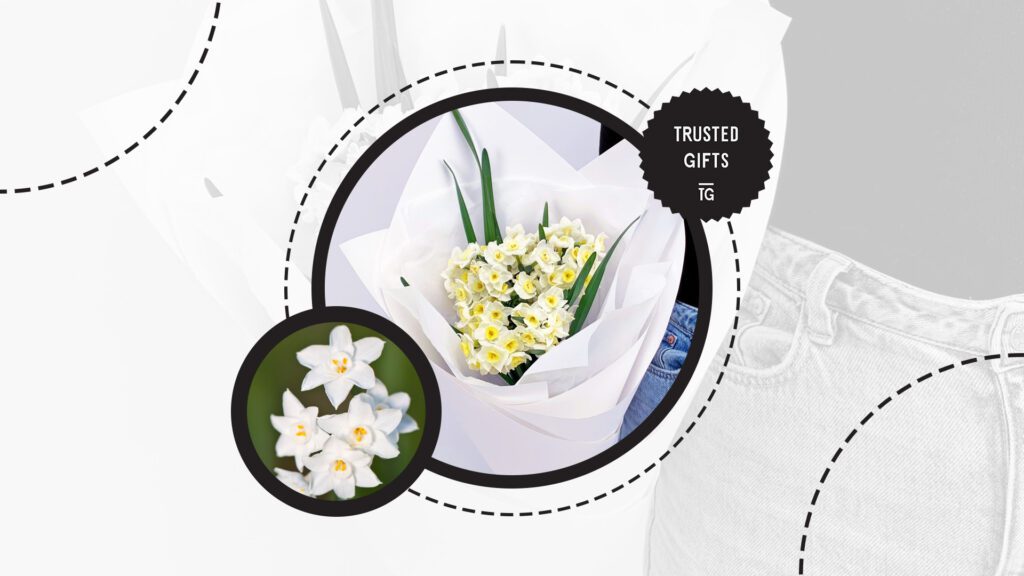

Unlike their close daffodil relatives, jonquils feature smaller blooms characterized by a slender, cylindrical corona that exudes a strong, sweet fragrance. Their petals often showcase shades of yellow, though they can also appear in white, cream, and an occasionally orange hue.
In contrast, daffodils typically boast larger flowers with trumpet-shaped coronas and a wider range of colors including yellow, white, cream, orange, and even pink.
While daffodil leaves are broader and flat, jonquil foliage is narrow and resembles rushes, adding to their visual appeal.
What are the meanings of jonquils?
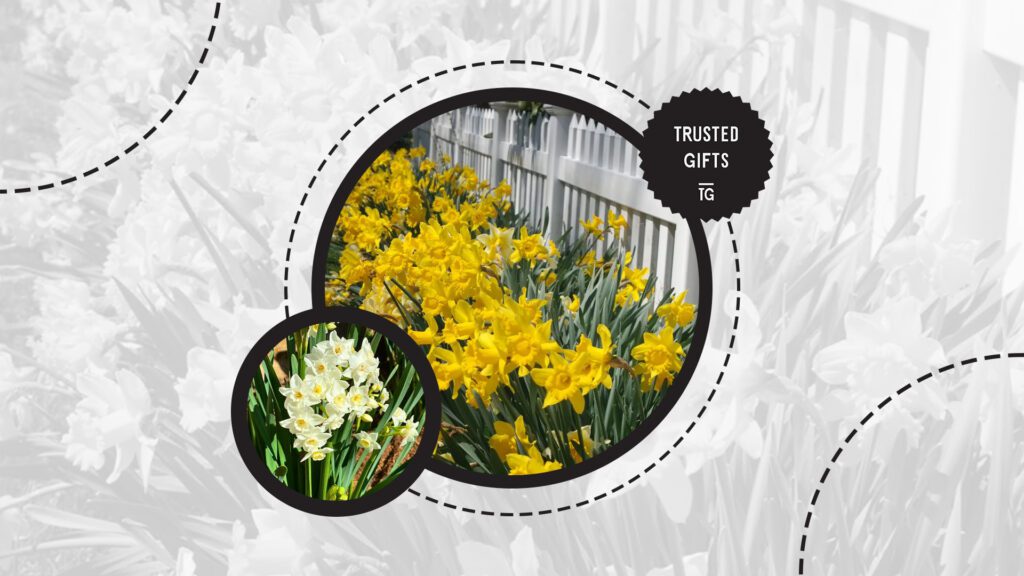

Similar to daffodils, jonquils also symbolize renewal and rebirth, heralding the arrival of spring with their much-earlier blooming season, embodying optimism and hope for brighter days ahead.
Beyond their seasonal symbolism, jonquils are also associated with affection and fondness. They are often given as gifts to express admiration and appreciation, simply bringing people joy since the Renaissance times with their vibrant colors and sweet fragrance.
What do the colors of jonquil flowers mean?
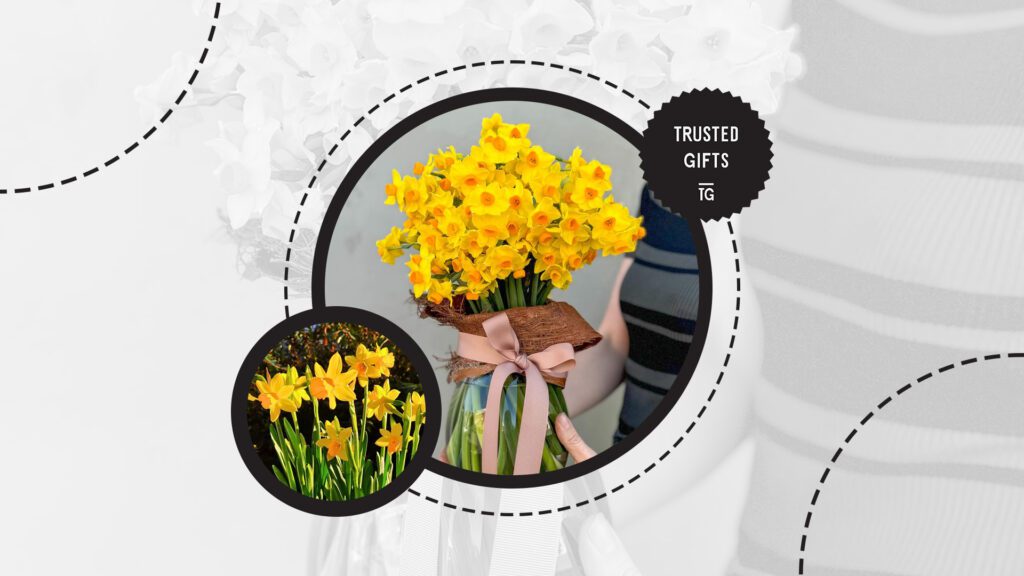

What are the religious and mythological associations of jonquils?
